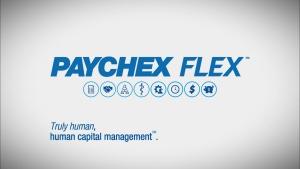- Nueva empresa
- Artículo
- Lectura de 6 minutos
- Last Updated: 07/06/2017
New Product Launch: Key Factors You Should Consider

Table of Contents
Are you considering a new product launch for your business?
In some ways, the decision is just about as momentous as the move to start your own business was. As with a new enterprise, the success of a new product launch hinges on the right timing. Bringing a new product to market too soon can mean a lack of customer interest (and desired purchasing behavior). Introducing a new product too late means a competitor has found a way to undercut your new venture and, may have left a landscape with insufficient customers.
Factors to consider prior to launch:
Perceived need
Let's say your sales team and customer service representatives have been hearing steadily from your target audience about certain key features your product lacks or some proposed newer version that might better satisfy their needs. Look closely at this helpful customer feedback and modify your potential upgrade to address those concerns. This way, you're meeting a perceived (but actually genuine) customer need.
Analyze and get a jump on the competition
Depending on your industry, you or your competitors might be known as "first-movers"; always ready to introduce a new product or upgrade ahead of the others. Other businesses rely on a follow-up approach, letting the market determine the success of a new launch before jumping in. Whatever your situation, look first to what your competitors are accomplishing (and missing) in your target market. Often, there's a unique gap in customer demand that you can swoop in and exploit; the key is doing the research to uncover what the competition is missing.
Put together a realistic budget
The launch of a new product will inevitably cost money. What you don't want is to have unforeseen expenses catch you by surprise. Never undertake the process hoping to cut corners here and there; you could end up sabotaging a favorable outcome. Here are just some of the anticipated costs:
Research and development. Expenses in this area can encompass everything from the need for raw materials, time and manpower to design testing protocols, new product testing itself, and the need to bring on additional staff to create and/or build the product. (Bringing in new employees might also mean hiring a manager to supervise them – and don't forget the resources needed to train new hires.)
Production. An accurate budget forecast should include all production-related costs, from the need for special materials and/or equipment to produce the new product, the operational processes involved, and the necessary shipping, delivery, packaging, and warehousing that comes with it. This budget should grow out of your best, in-depth analysis of anticipated customer demand.
Promotion. A great new product or upgrade isn't worth much if the target audience doesn't know about it. Part of your overall budget must be dedicated to advertising, marketing, signage--the entire spectrum of promotional activities (including social media) that happens while the new product is close to launching. Look for every opportunity to build buzz and get people talking about your business prior to the launch.
Obviously, there's a lot riding on the successful outcome of this exciting process. Remember that you should do everything in your power to go to market on the date you've announced to customers. If you miss a launch date, you sacrifice credibility and customer enthusiasm — two intangibles very difficult to retrieve later on.
Finally, devise a "Plan B" – both in the event the new product or upgrade sells in greater volume than anticipated (in which case you'll need to spend more on manufacturing and distribution) and if the product or upgrade fails to catch on. Maintaining flexibility "and pivoting along the way" is crucial, so think of a viable Plan B, should changing conditions require you to adopt an alternative strategy.
Tags







